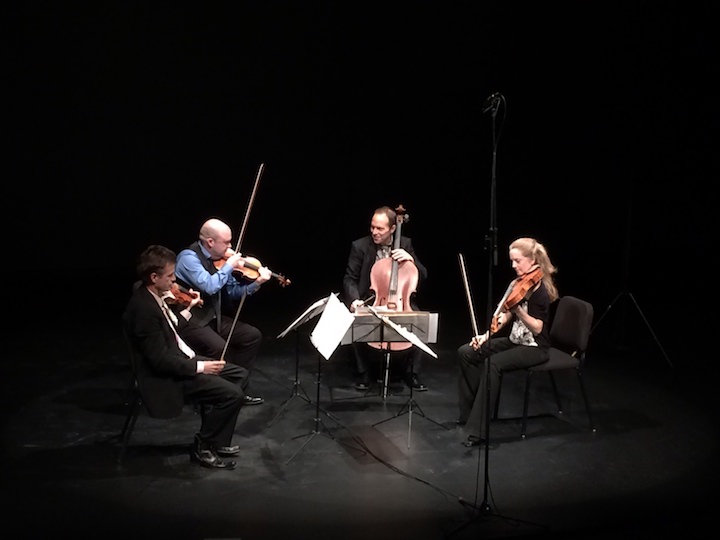
The St Lawrence String Quartet seamlessly managed this week’s transition to new second violin Mark Fewer. At their annual Music Toronto concert visit on Thursday night, one of Canada’s most famous chamber music exports proved itself to be in excellent form.
- Classical Music 101: What Does A Conductor Do? - June 17, 2019
- Classical Music 101 | What Does Period Instrument Mean? - May 6, 2019
- CLASSICAL MUSIC 101 | What Does It Mean To Be In Tune? - April 23, 2019
Founding violinist Geoff Nutall and violist Lesley Robertson, with Fewer and cellist Chris Costanza vividly demonstrated in a meaty programme that the St Lawrence continues to be about intensely committed performances that are more than fine balance, heaps of technique and great communication.
Since their great coming out at the 1992 Banff International String Quartet Competition, the Toronto-formed Lawrences — long since resident at Stanford University — have displayed a knack for distilling the emotional essence of whatever they happen to be playing.
Thursday’s programme began, in classic fashion, with the father of the modern string quartet: Joseph Haydn. The first of his Op. 20 quartets, from 1772, opens with a conversational round-table. The Lawrences engaged gamely, passing around musical themes and ripostes with the ease of seasoned circus jugglers — taking the movement at a brisk pace.
The highlight of the piece was the achingly emotional third movement, which the quartet pulled out with intense skill. It was the ideal prelude to the heartache woven through Bohuslav Martinu’s String Quartet No. 5, which dates from 1938.
The Lawrences effectively found, defined and maintained the rhythmic underpinnings in the writing, leaning into their instruments with a weight and intensity that were, at times, overwhelming — the ideal way to manifest the romantic turmoil that Martinu was going through in his personal life.
After all of this intensity, the evening closed with a silken, elegant interpretation of Antonin Dvorák’s String Quartet No. 11, from 1881. A lot of Dvorák’s music is intensely dramatic, but this piece is more classically architectural — and the Lawrences successfully shifted into a lower emotional gear, focusing instead on coming through with graceful phrases and very carefully measured variations in tempo.
The St Lawrence String Quartet transcended the stark possibilities of four people playing serious music on an otherwise bare stage with the art of engaged musical narrative — and their newest member is already an effective addition. It bodes well for the group’s future.
John Terauds
- Classical Music 101: What Does A Conductor Do? - June 17, 2019
- Classical Music 101 | What Does Period Instrument Mean? - May 6, 2019
- CLASSICAL MUSIC 101 | What Does It Mean To Be In Tune? - April 23, 2019



